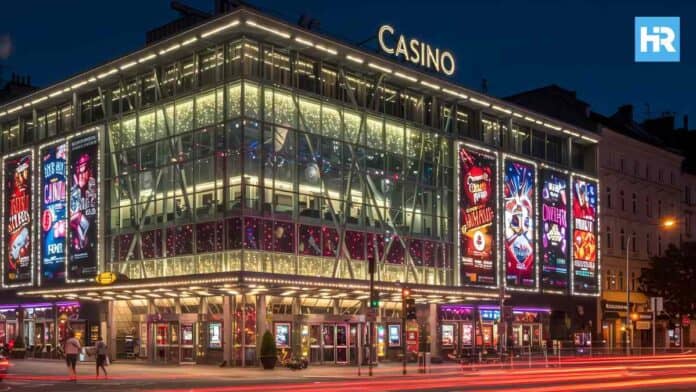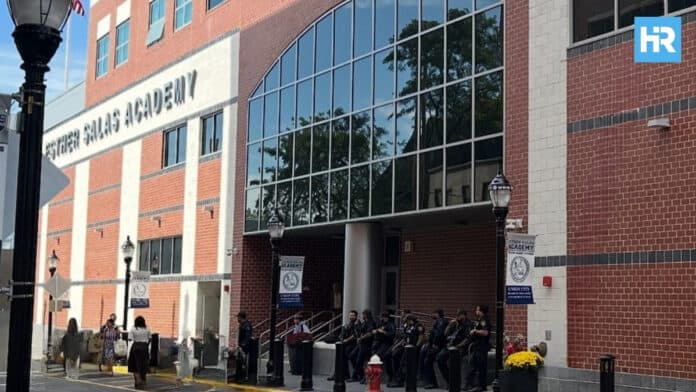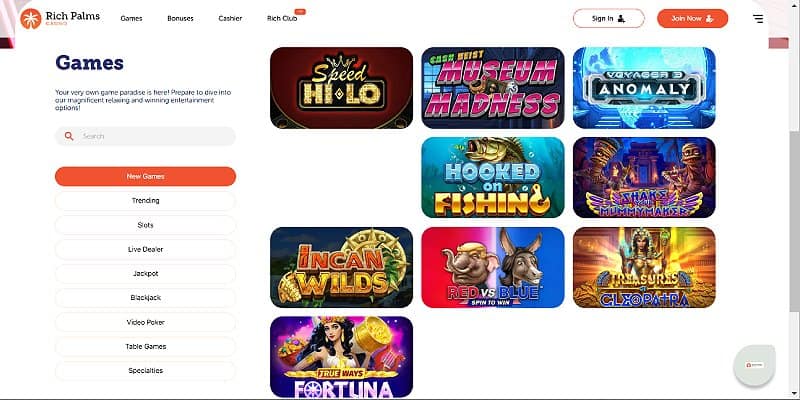Flashy icons are everywhere, but only a few mobile apps are worth downloading. With new mobile casinos popping up daily, finding the right one can feel like an endless scroll.
That’s where we come in. We’ve tested the best mobile casinos firsthand, playing real money slots, blackjack, and live dealer games directly on iOS and Android devices to see which sites actually deliver fast payouts, smooth gameplay, and responsive mobile design.
After plenty of spins and hands, Super Slots stood out as our #1 pick thanks to its generous bonuses and mobile-friendly design that makes gameplay seamless anywhere.
Still, every player has different needs. That’s why we’ve broken down what each of the other top mobile casino sites has to offer in our full reviews below.
Best Mobile Casinos
| Super Slots | Best overall – 300 welcome free spins |
| Lucky Red Casino | Most generous jackpots |
| Slots.lv | Huge game variety |
| Ignition | Top pick for poker |
| Slots of Vegas | Best for mobile slots |
1. Super Slots – Best Mobile Online Casino Overall

Pros:
- 300 welcome free spins
- $15,000 in daily cash races
- Decent lineup of jackpot slots
- 1,500+ mobile casino games
- More than 20 banking options
Cons:
- Can’t filter by jackpot size
- No traditional deposit match
If you’re searching for the best mobile phone casino, consider joining Super Slots. It has one of the biggest game collections among mobile gambling sites, topped with rewarding weekly deposit bonuses and free spins.
Game Library: 4.95/5
Super Slots offers an impressive variety of games from top software providers. When you find games powered by Betsoft and Pragmatic Play, you know that you’re looking at the best-of-the-best.
Some top titles to try at this mobile casino include Gates of Olympus, Great Rhino Megaways, and Reels & Wheels XL. New titles are always added to keep things fresh, so you’ll never get bored. Plus, with 7-figure jackpots up for grabs, there’s plenty of opportunity to win big.
However, to find those 7-figure jackpots we’re talking about, you’ll need to scroll down the page until you find them. There’s no separate jackpot section to help you with navigation.
Bonuses and Promotions: 4.9/5
The bonuses at Super Slots are where this top mobile casino really shines. As a new player, you can get started with 300 welcome free spins – 30 a day on a mystery slot for 10 days straight.
While Super Slots doesn’t offer a first deposit match, it makes up for it with daily cash races with $15,000 up for grabs. All you need to do is play casino games for real money, and you’ll qualify for a share of the prize pool.
Weekly leaderboards, free rolls and cash tournaments, reload bonuses, and free spins are also part of the weekly agenda at this online mobile casino.
Payment Options: 4.8/5
Super Slots offers both fiat and crypto payment options. Deposits are processed instantly, no matter which method you use. Withdrawals take a bit longer, but if you’re using cryptocurrency, they will be processed within one day.
The number of accepted payment methods is great, with 17 cryptocurrencies, credit cards, and a few more options like MoneyGram, Money Orders, P2P transfers, and more.
>> Get started with 300 welcome free spins [Super Slots]
2. Lucky Red Casino – Top Mobile Casino for Jackpots

Pros:
- 400% match bonus up to $4,000
- Get a $75 free chip
- Accepts 7 cryptocurrencies and e-wallets
- 200+ real money games
- Has live phone support
Cons:
- No live dealer games available
- Website design could use some updates
Those looking for mobile instant play casinos will love Lucky Red Casino. This one’s our top pick for all the jackpot hunters out there, letting you choose from an app download or mobile browser play.
Game Library: 4.8/5
Lucky Red Casino’s 200+ games are a bit less than what you’d find at other top-rated casino apps, but they make up for it in quality. The casino is powered by RealTime Gaming, so you know that you’ll only find high-quality titles here.
Unfortunately, you’ll have to go elsewhere if you’re looking for live dealer games, as they’re not an option yet at this mobile casino.
But hey, you can still play casino games here with pot prizes that can go as high as over $1 million. Some of the popular progressive jackpot games include Aztec’s Millions, Megasaur, and Spirit of the Inca.
Bonuses and Promotions: 4.8/5
Of course, this mobile casino also knows how to properly welcome its new customers. Slots enthusiasts rejoice because you can get a 400% slots bonus up to $4,000 on your first deposit. Just make sure to use the bonus code “LUCKYRED400.”
Now, if you prefer a well-rounded bonus, the code to use is “LUCKYRED100.” That’s a bonus offer you can use on other online games aside from slot machines.
The excitement doesn’t end there since you can also score a $75 free chip if you make your first deposit with a cryptocurrency.
Payment Options: 4.7/5
For banking, you can use credit and debit cards like Mastercard and Visa or crypto options such as Bitcoin, Ethereum, Bitcoin Cash, and Litecoin.
Withdrawals are available over bank wire transfers, checks by courier, or Bitcoin. We recommend BTC because it only takes them a day to complete your payout with this option.
Other payout methods could take up to 5 days to process.
>> Grab your $4,000 mobile casino bonus [Lucky Red Casino]
3. Slots.lv – Best Game Variety of All Mobile Online Casinos

Pros:
- Up to $3,000 mobile casino bonus
- Fee-free transactions
- 400+ online real money games
- Same-day payout methods
- Reload bonuses for regulars
Cons:
- No e-wallet banking
- Only 6 live dealer games available
Love popular slot games but also have a knack for playing classic table games? Slots.lv might just be the best mobile casino app for you. Its website is optimized for mobile users, so gaming on the go is as smooth as a roulette ball gliding on the wheel.
Game Library: 4.7/5
If you’re on the lookout for mobile casino options with an impressive array of games, Slots.lv might just be your new playground. The variety here is like a slot game lover’s dream come true. They’ve got everything from classic slots to the high-stakes thrill of poker.
All the games here are from reputable online casino software providers like RealTime Gaming, Rival Gaming, and Betsoft, ensuring you’ll enjoy the latest features and top-notch graphics.
Bonuses and Promotions: 4.8/5
Slots.lv rolls out generous mobile bonuses right from the start. If you deposit with crypto, you can grab up to $3,000 in bonus cash plus 30 free spins on Golden Buffalo. Card deposits aren’t left out either, with up to $2,000 in bonus cash and the same free spins.
All bonuses come with 35x wagering requirements before you can withdraw your winnings, which is pretty standard in the mobile gambling industry.
On top of that, every real money bet earns loyalty points you can later trade in for bonus cash or exclusive offers, which is a nice extra perk for regular players at new mobile casinos.
Payment Options: 4.7/5
This mobile casino app makes it easy to load up your chips and cash out those winnings. You can use your credit or debit cards, like Visa and Mastercard. If you’re a crypto user, you can use Bitcoin, Bitcoin Cash, Litecoin, and Ethereum for deposits and cashouts.
You’ll have to deposit at least $25 if you use your card, while crypto minimums depend on the type of coin you use. As for withdrawal speed, you should get crypto payments in about 15 minutes, while a physical check could take up to seven business days.
>> Get up to $3,000 welcome bonus [Slots.lv]
4. Ignition – Top Mobile Phone Casino for Poker Tournaments

Pros:
- $1m+ GTD poker tournaments monthly
- Hourly and daily Hot Drop jackpots
- $3,000 combined welcome package
- Ignition Miles VIP program
- 3 dozen live dealer games
Cons:
- Bonus is split between poker and casino
- Could use more classic slot games
Thanks to its smooth performance on any mobile device and high-traffic poker rooms, Ignition rightfully earned its spot on our list. But poker is not everything this casino has going for it. You’ll also find tons of progressive jackpots and a great live casino section.
Game Library: 4.7/5
If you’re looking for a mobile casino with a great selection of poker games, then look no further than Ignition. The site offers 8 different casino poker variants, including Texas Hold’em and Omaha.
And if you’re a fan of tournaments, then you’ll be in for a real treat. Ignition hosts events with guaranteed prize pools of up to $1,000,000 every single month. There are also weekly tournaments with prize pools of up to $250,000.
In addition to poker, you can enjoy virtual sports betting, try your hand at over 30 jackpot slots, or dive into 30+ live casino games with varying bet sizes.
The selection of classic online slots is somewhat limited, however.
Bonuses and Promotions: 4.7/5
New players at this mobile app can take advantage of a welcome deposit bonus of up to $3,000. The promo is divided into a $1,500 casino bonus and a $1,500 poker bonus.
The attached wagering requirements for the bonus are only 25x, which is lower than average.
The poker bonus funds are collected in $1 increments by collecting Ignition Miles, the site’s loyalty program that grants you VIP points for playing poker games.
Payment Options: 4.6/5
Ignition is 100% cryptocurrency-friendly, allowing you to use Bitcoin, Ethereum, Bitcoin Cash, and Litecoin. This makes Ignition one of the best casino apps for crypto users.
The only drawback is that there are no e-wallets available. You can still use a handful of credit cards like MasterCard, Visa, and Amex.
Bitcoin transactions and player transfers should happen within 24 hours, while wire transfers and checks by courier will take a few business days to get to you.
>> Claim up to $3,000 in welcome bonuses [Ignition]
How We Ranked The Best Mobile Casino Sites & Apps
All mobile online casinos on our list offer a smooth gambling experience on any device, including iPhone, Android, and tablet devices. But that’s only the beginning.
Mobile Casino Games
After confirming the licensing and safety of a mobile casino, we always check for a good selection of games.
Top mobile casino apps offer a wide range of slots, including 3-reel, 5-reel, and progressive jackpot games, as well as video poker, roulette, blackjack, baccarat, specialty games, and more.
Generous Mobile Casino Bonuses
Welcome bonuses, reload bonuses, VIP programs, and other promotions are important factors when rating the best online casinos.
We ensure that all mobile phone casinos we recommend offer generous bonuses with fair wagering requirements and transparent terms and conditions.
Payment Methods and Withdrawal Speed
The best mobile casinos will allow you to use multiple payment options. We want to see a list of banking methods that cover credit cards, bank transfers, and cryptocurrency.
Also, top online mobile casinos offer fast payouts and won’t charge high transaction fees regardless of the banking method you use.
24/7 Available Support Team
Even the best mobile casino apps aren’t perfect, so reliable customer service is a must. We look for casinos that provide 24/7 support through live chat, email, or phone, and we give extra points if support is available directly within the app.
Loyalty Programs & VIP Rewards
New mobile casino sites can easily stand out when they reward regular players with ongoing perks. We look for loyalty programs that offer redeemable points, exclusive promotions, or VIP tiers that unlock better bonuses and faster withdrawals. These programs add long-term value and help players feel rewarded for their continued play.
Best Casino Games Available at New Mobile Casinos
The best mobile gaming sites offer many different games, each unique and interesting in its own right. Let’s have a look at some of the most popular games you’ll find at new mobile casinos.
Slots
Slots are a mainstay in mobile casinos, offering a diverse range of themes and jackpot sizes. Many players enjoy them for their straightforward gameplay and the potential for large payouts, especially in progressive jackpot games.
The best casino apps keep releasing new mobile slots to keep gameplay exciting, with fresh themes and bonus features dropping almost every week.
Blackjack
Blackjack remains a favorite for players who like strategy alongside luck. At new mobile casinos, you’ll find versions that work beautifully in portrait mode, with quick-bet buttons and smooth animations that make playing on your phone just as exciting as on desktop.
Roulette
Roulette is another classic table game known for its simplicity and variety of betting options. The game involves predicting where the ball will land on the spinning wheel, and it attracts players with its straightforward rules and the potential for significant payouts on single-number bets.
Poker
Poker appeals to competitive players, and mobile apps now let you join real-money poker rooms and tournaments directly from your device. Mobile casinos often include multitabling options, chat features, and simplified lobbies so you can get into the action faster than at traditional desktop sites.
Baccarat
Baccarat has surged in popularity thanks to the newest mobile casinos making it faster and more accessible. Tap-based betting and instant results make it ideal for quick sessions, and some mobile gaming sites even add themed variations to keep gameplay fresh.
Live Dealer Games
Live dealer games are where new mobile casino sites really shine. They combine HD video streams with interactive betting interfaces, letting you chat with dealers and other players while enjoying blackjack, roulette, or baccarat on your phone. The best apps optimize camera angles and video quality for mobile devices, creating a near-realistic casino feel.
Best Mobile Casinos – FAQs
Is It Safe To Play at Mobile Casinos?
Yes, it’s safe to play at mobile casinos, as long as you stick with reputable sites. Trusted mobile casinos like Super Slots and Ignition are licensed and use SSL encryption to protect your data.
Always choose casinos with proper licensing and a strong track record of fair play.
How Do I Know if a Mobile Casino Is Legit?
Check for a valid gaming license (usually listed at the bottom of the casino site), SSL security, and positive reviews from real players. Legit mobile casino apps also provide transparent terms and responsible gambling tools.
How Can I Withdraw My Winnings From a New Mobile Casino?
Most new mobile casino sites require identity verification before your first cashout. Once you verify your identity, you’ll be able to withdraw using crypto, credit cards, or bank transfers.
How Do I Find the Best Casino Apps for Mobile Users?
To find the best mobile casinos, you’ll have to check for factors that could affect your gameplay. That includes game variety, mobile bonuses, payout speed, and customer support.
What Are the Best Mobile Casinos?
Based on testing, Super Slots is the best mobile casino overall. Slots.lv stands out for variety, Ignition is best for poker, and Lucky Red is top for jackpots.
Each mobile app excels in different areas, so the “best” one depends on what you want to play.
Can I Win Real Money at Mobile Casinos?
Yes, you can win real money at legitimate mobile casinos. The odds of winning vary depending on the game you’re playing.
However, remember that you can’t win real money if you play games in demo mode. You’ll have to make a deposit first.
Can I Play Free Games at Mobile Phone Casinos?
Yes. Most mobile casinos offer free versions of their slots and table games. It’s a great way to test the casino app and learn the rules before wagering real money.
What Are the Best Games To Play At Mobile Casinos?
The best games to play at mobile casinos are those with high RTP (Return to Player) rates. They’re the ones likely to have frequent wins.
However, it doesn’t mean you should avoid low RTP games because, most of the time, they offer bigger wins.
Top Online Mobile Casinos – Quick Comparison
Need a refresher? Let’s go over the best mobile casino apps once again before you decide which one works best for your needs.
Super Slots: Our #1 mobile pick overall, thanks to 1,500+ mobile games and a 300 free spins welcome package. Regular players can enjoy $15,000 in daily cash races topped with fast payouts using 20+ payment options. It’s also one of the best no KYC casinos online.
Lucky Red Casino: Jackpot hunters will love Lucky Red, with progressive prizes soaring past $1 million. New players can grab a 400% slots bonus up to $4,000, plus a $75 free chip for crypto deposits.
Slots.lv: Known for its variety, Slots.lv offers 400+ mobile games and one of the best crypto-friendly bonuses online — up to $3,000 plus 30 free spins on Golden Buffalo.
Ignition: The best mobile casino for poker fans, with $1M+ guaranteed tournaments every month, daily events, and a combined $3,000 poker and casino welcome package.
How To Join Mobile Gambling Sites & Apps
Getting started at mobile casinos is quick and easy. Here’s a step-by-step guide using Slots.lv as an example.
Step 1: Create Your Mobile Casino Account
- Visit Slots.lv’s casino site and click the “Join” button. A registration form will pop up.
- Fill out the sign-up form with your personal information, then click the “Register” button.
Step 2: Verify Your Account
- Slots.lv will send you an SMS containing your account verification code.
- Enter the code and click “Verify” to log in to your casino account.
Step 3: Deposit and Claim Your Mobile Bonus
- Head to your account dashboard and tap “Deposit.”
- Choose a payment method and enter the required details.
- Select or enter the bonus code for the welcome package you’d like to claim.
- Once complete, your funds and any mobile bonuses will appear in your account.
Step 4: Start Playing Casino Games on Mobile
- Return to the game lobby, pick a slot, table game, or live dealer option, and tap to load it.
- From there, you’re ready to play real money games anytime, anywhere.
Still Looking for the Top Mobile Casinos?
We hope our rundown of the best mobile casinos has helped narrow down your choices.
If you’re still undecided, Super Slots is our #1 mobile casino pick overall. With 1,500+ games, a 300 free spins welcome package, and $15,000 in daily cash races, it’s easily the best option for players who want nonstop action and smooth gameplay on any device.
If poker’s your game, Ignition is hard to beat, with $1M+ guaranteed tournaments every month and some of the most active poker rooms online. And for jackpot hunters, Lucky Red Casino delivers progressive prizes that can climb past $1 million.
No matter which mobile casino you go with, remember to play responsibly and have fun!
Important information for our readers:
Participation is restricted to adults 21+.
Gambling carries financial risk and may lead to addiction.
Never gamble with money you can’t afford to lose.
Check your local laws to confirm online gambling is allowed where you live.
If you need help, call 1‑800‑GAMBLER for free, confidential support any time.
More details: https://www.ncpgambling.org/





















